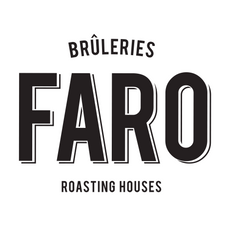BLENDS : Coffee’s Most Underrated Offering
Blends are a staple offering in most cafe menus and something every roaster should master. However, designing and roasting them presents several challenges; whether it is the knowledge of coffees, the roasting of beans of different origins, varieties, densities, name it!
A LITTLE HISTORY
The earliest European coffeehouses relied on blends to get clients. As coffee companies became larger, pre-ground coffees became more popular and the result was an overall decline in quality.
Large companies continue to create blends largely for economic reasons, hide defects in the beans or achieve a standardized flavor. Until specialty coffee arrived, coffee enthusiasts consumed mass-produced blends from basic coffees. It can be ok… as long as you don't know what you're missing. Once you've had a cup of specialty coffee, you definitely can't go back! Indeed, speciality coffee roasters bring together diverse flavors to create an even better taste experience. They experiment with different beans in the pursuit of the best possible coffee to enjoy.
WHY BLENDS?
As coffee roasters, we turn to blends to bring comfort and pleasure, but also to create unique coffees and winning combinations that will offer a coffee with a constant and balanced profile. Some blends are born from experimentation, while others are the achievement of a desired profile. When done right, they create a kind of harmony that individual coffees often cannot do.
At Faro, we create blends by tasting several coffees, then preparing combinations of what we believe to be complementary and that can give a unique result. Sometimes we get it right the first time, and other times we have to test it over and over again.
Creating blends is not without its challenges. It is a science that depends heavily on knowing the coffee bean itself and how different coffees react together. For example, if you have two coffees, one with more herbal notes and the other with the sweetness of cane sugar, that doesn't mean you can just combine them to synchronize the flavors. If you want to capture all the different notes and make sure they work well together, you need to understand the chemistry behind the coffee - how the size and structure of the beans react to heat, which flavors are enhanced at various points in the roast or extraction, etc.
In addition, as an agricultural product, coffee is influenced by climatic conditions, growth cycles and harvest times that differ by region. Needless to say, these variables present a lot of challenges for us roasters, who must constantly adjust to coffee variations.
OUR GOLDEN GATE BLEND
With the Golden Gate Espresso, we wanted to create a light roast coffee with a profile "bridging" West coast coffee roasts practises and Italian traditions. We therefore tested many combinations of coffees and in order to achieve a profile for the light roast and fruity espresso lover, but without over-acidity. What we were looking for was a bite of strawberries rather than sour lemon, you see? A blend of two single origin coffees achieved it : our latest release, the Costa Rica Black Honey and the Colombian Central Farallones. With their distinctive but complementary profiles, these two coffees stood out completely during our tastings.
To be honest with you, this blend is even better than our first recipe!




